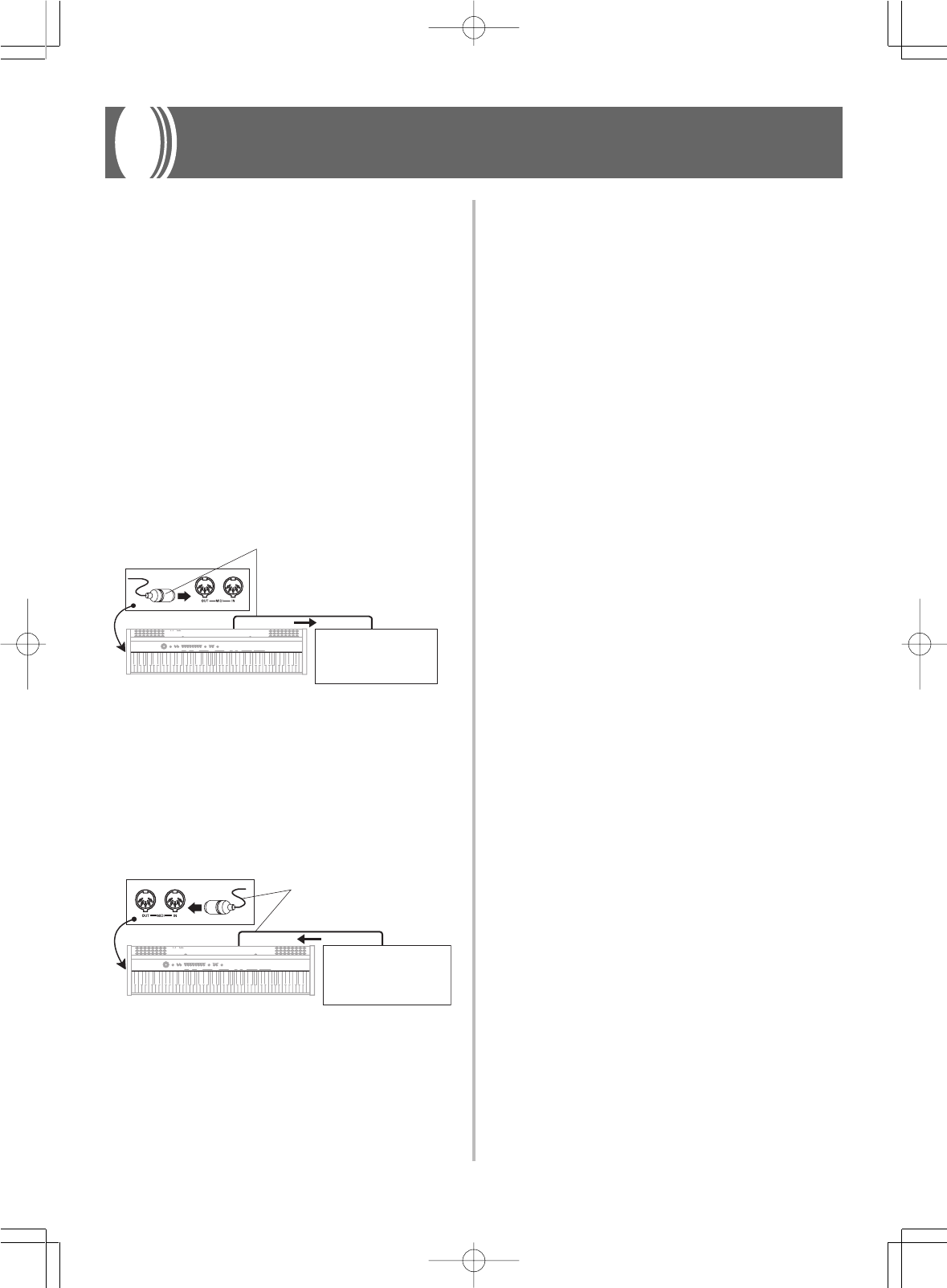
E-22
424A-E-024A
What is MIDI?
The letters MIDI stand for Musical Instrument Digital
Interface, which is the name of a worldwide standard for
digital signals and connectors that makes it possible to
exchange musical data between musical instruments and
computers (machines) produced by different manufacturers.
MIDI compatible equipment can exchange keyboard key
press, key release, tone change, and other data as messages.
Though you do not need any special knowledge about MIDI
to use this digital piano as a stand-alone unit, MIDI operations
require a bit of specialized knowledge. This section provides
you with an overview of MIDI that will help to get you going.
What you can do with MIDI
Send
• What you play on the digital piano can be sent to the
connected device as MIDI messages*
1
. The connected
device sounds notes in accordance with the messages it
receives.
• MIDI messages*
1
can be sent from the digital piano to a
commercially available MIDI sequencer*
2
for recording.
Receive
• The digital piano can be used to sound notes sent as MIDI
messages from a connected device.
• Commercially available MIDI piano data can be sent from
a MIDI sequencer*
2
or MIDI-capable personal computer
for playback on the digital piano. Up to 16 parts can be
played simultaneously by the digital piano.
MIDI
*1 Keyboard play and memory playback data can be sent as
MIDI data. Demo tunes cannot be sent as MIDI data.
*2 A device that contains memory storage for MIDI data.
Some MIDI sequencers feature external storage
capabilities, which let you record a virtually unlimited
number of tunes.
MIDI Connections
Two MIDI cables, one for sending and one for receiving, are
required for two-way recording and playback capabilities
with a connected MIDI sequencer or other device.
MIDI Channels
MIDI allows you to send the data for multiple parts at the
same time, with each part being sent over a separate MIDI
channel. There are 16 MIDI channels, numbered 1 through
16, and MIDI channel data is always included whenever you
exchange data (key press, pedal operation, etc.).
Both the sending machine and the receiving machine must
be set to the same channel for the receiving unit to correctly
receive and play data. If the receiving machine is set to
Channel 2, for example, it receives only MIDI Channel 2 data,
and all other channels are ignored.
This digital piano is equipped with multi-timbre capabilities,
which means it can receive messages over all 16 MIDI
channels and play up to 16 parts at the same time.
Keyboard and pedal operations performed on this digital
piano are sent out by selecting a MIDI channel (1 to 16) and
then sending the appropriate message.
OUT
IN
MIDI musical instrument
MIDI sound module
MIDI sequencer
Other MIDI device
MIDI cable: MK-5
Sender
Receiver
IN
OUT
MIDI musical instrument
MIDI sequencer
Other MIDI device
MIDI cable: MK-5
Sender
Receiver
PS20_E_22-25.p65 02.2.4, 7:12 PMPage 22 Adobe PageMaker 6.5J/PPC


















